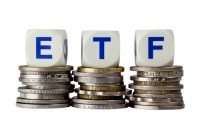Investing In an ETF Portfolio
 Investing can both be an art as well as a science. While data and numbers can be analyzed and determine what the best investments are out there, there are some other underlying factors that just can’t be included into the evaluation most of the time. That is why there is always that underlying risk that keeps investing as well as trading into something that can be measured in numbers.
Investing can both be an art as well as a science. While data and numbers can be analyzed and determine what the best investments are out there, there are some other underlying factors that just can’t be included into the evaluation most of the time. That is why there is always that underlying risk that keeps investing as well as trading into something that can be measured in numbers.
And with a number of investing options available, one relatively new investment opportunity is the ETF or Exchange Traded Fund. It is a type of investment vehicle where investors can have the chance to own a number of assets, usually from different industry sectors, at a more affordable rate. ETF’s are considered as securities certificate that stand for a combination of individual stock certificates. These basket of different stocks are being sold with a single stock certificate which is them being traded like stocks. ETF’s both provide certain advantages and disadvantages to investors.
ETF Benefits
One of the main benefits of Exchange Traded Funds is that they allow people to easily diversify their investments. When an investor considers an ETF, he or she will be purchasing an ownership to a basket of different stocks. In essence, the risk of investing in just a single company is somewhat reduced to a certain extent. Investing in an ETF also helps guard against market volatility at a certain level.
ETF’s are generally considered as passive investments. Unlike mutual funds, ETF’s need not always be active in the trading block or in markets that they belong to in order to earn. ETF’s also cost less in terms of management fees when compared to mutual funds.
Choosing ETF’s To Invest
When you are already decided to invest in ETFs, there are several things that you should be considering. One important factor in choosing an ETF is the composition of stocks that it includes. Some ETFs may concentrate on a certain industry even though it may be composed of several different stocks. This may indicate how the ETF may perform. The focus may vary from different ETFs available. You may need to find out about this to see if the ETF chosen focuses on the industries and markets that you are interested in. You must also know the fees that you may need to pay when investing in the different ETFs. While the fees may be low, it may differ from one ETF to another.
Developing An ETF Portfolio
When building an ETF portfolio, the investor must make sure to include all asset classes in order to create a well-diversified combination of investments. One of the first areas to look into is sector ETFs. These ETFs usually concentrate on specific fields and industry such as healthcare, technology or financials. You may want to invest in ETFs focusing in different sectors for a more diversified portfolio. Another good area to look into is international ETFs. These ETFs usually focus on investments in emerging markets and developed markets all around the world. Some may track the index of a certain country or even a certain region. Up to three different international ETFs will help you build a more diversified portfolio.
Other ETFs worth looking into when building your diversified ETF portfolio are commodity ETFs and the relatively new currency ETFs. While they may be considered as volatile investments relative to other ETF’s, they also provide added options for investors trying to build a diversified ETF portfolio.
Investing – GuideTo.Com
Recent Comments